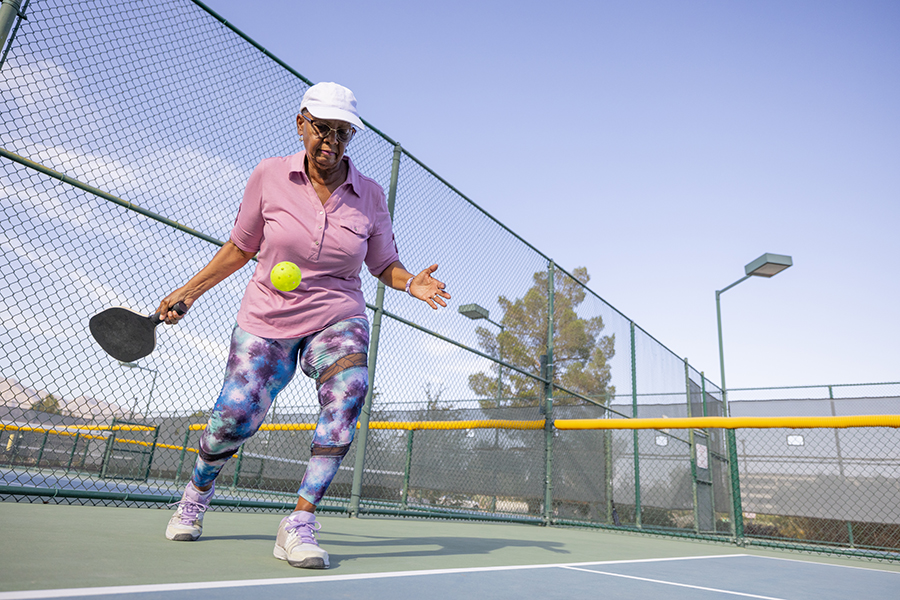Supporting an Active Lifestyle: Common Fitness Injuries and How to Care for Them, According to a Local Expert

When beautiful weather arrives, everyone wants to get out and get to playing, from kids starting up school sports to retirees hitting the links. For people of every age, keeping your body in its best shape is important if you want to keep having fun.
That fact is always on the mind of Premier Orthopaedics President Dr. Jeffrey Malumed. He oversees one of the fastest growing orthopaedics groups in the state, with 34 offices and 17 therapy centers seeing patients throughout the region. He’s also an expert in sports-related injuries. Premier Orthopaedics is the official orthopaedic partner of the Philadelphia Union, and Dr. Malumed has personally worked and traveled with the U.S. Olympic ski team.
“We take care of the aging athlete and we take care of the young athlete,” Malumed says. “They have different types of injuries, but we’re equipped to take care of all of them, and we’re multifaceted. We not only have orthopedic surgeons, we also have non-operative sports experts, orthopedic urgent care, MRIs, and physical therapy–we cover all aspects of orthopedics.”
His team of care providers are unique in the region in that they’re focused on providing comprehensive care, designed to avoid unnecessary surgeries and get you in your best shape long-term, a practice known in the health care industry as value-based care. For that reason, we went to him to get his insight on some of the common sources of injury in the region, and how to use therapeutic support–with or without surgery–to get yourself in the best shape for years to come.
Preparing for Success
Since COVID, Malumed has seen a boom in outdoor sports for all ages–sports like golf and skiing and pickleball, where the family can have fun together. Soccer is also booming, thanks in part to higher profile pro athletes in the U.S., while tennis offers a good lower-impact but competitive option.
But even for safer activities like these, it takes preparation to avoid injury, and that preparation can change depending on your goals. For younger athletes, Malumed recommends getting sports-specific training, to set them on a path to achieve their best at a competitive level.
“For the young athletes who are really trying to excel, there’s lots of prep and there’s lots of sports-specific training that we do,” Malumed says.
This often involves building up the body–in particular, making sure the lower body is as strong as the upper body. But exercises that focus on balance can also help ensure the athlete stays on the field or court.
Even for older adults, these balance activities can be important–you can’t even accomplish mild exercise if you’re held up by an ankle sprain. On that front, Malumed points out the importance of a comprehensive treatment approach–a physician that stays with you can guide you to the particular kind of care that you need for your goals. That includes helping you decide if intensive activity is right for you–or if it’s actually best for you and your body to take it down a gear or two.
Physical Therapy
Sports prep isn’t necessary for everyone, and as the Baby Boomer generation ages, Malumed has seen an increase in the number of older adults who, while not competing intensely, just want treatment to ensure they can do what they love for as long as they can.
That mindset has become easier to support thanks to a variety of treatment options. For injuries for more casual or older sports enthusiasts, it’s important to remember that surgery may not be necessary–and there are nonsurgical treatments that can actually improve your performance for the long term.
“People shouldn’t be scared about coming to see an orthopedic surgeon or non-operative sports doctor for their injuries,” Malumed says. “They’re thinking ‘Hey, I don’t want to have surgery,’ and 90 percent of the time, they don’t need surgery.”
In particular, physical therapy can both solve your immediate problem, and it can also teach you exercises and strength training that will prevent injury in the future. For those who might hesitate to seek treatment, you can almost think of it as a custom exercise routine guided by a medical expert. Plus, you have complete control over your care–you can attend for as long as you need to feel secure in your body, and once you have the routines down, you can go employ them yourself at the gym.
Alternative Therapies and Minimally Invasive Approaches
For more lingering or serious injuries, Premier can also offer therapies that stop short of surgery while providing a more intensive recovery.
For tendinitis, inflammation, and arthritis, Premier’s regenerative division can offer a combination of platelet-rich plasma, stem cell treatments, and others to help spur tissue recovery. Cryotherapy also provides the option to accelerate recovery by stimulating your muscles through a kind of supercharged cold compress.
“It’s a lot better than putting an ice bag on your ankle,” Malumed says. “These treatments often offer results that you just can’t do at home or at the gym.”
For those who do need a surgical solution, Malumed notes that today’s minimally invasive techniques make for a much more approachable option. Instead of a multi-day recovery, patients can often go home the same day.
For those considering surgery, Malumed points out that making sure you’re getting comprehensive care is critical. A physician who takes a value-based approach isn’t just trying to operate on you–they benefit from you staying healthy whether you receive surgery or not, an approach Premier has tried to promote in the region.
“We’re on the forefront of value-based medicine,” Malumed says. “We’re trying to promote programs that change the face of medicine in our area.”
At Premier, your physician stays with you, from MRI to initial treatment plan to any follow ups–which means they’re just as invested in keeping you in shape for the long haul as you are.
This is a paid partnership between Premier Orthopaedics and Philadelphia Magazine